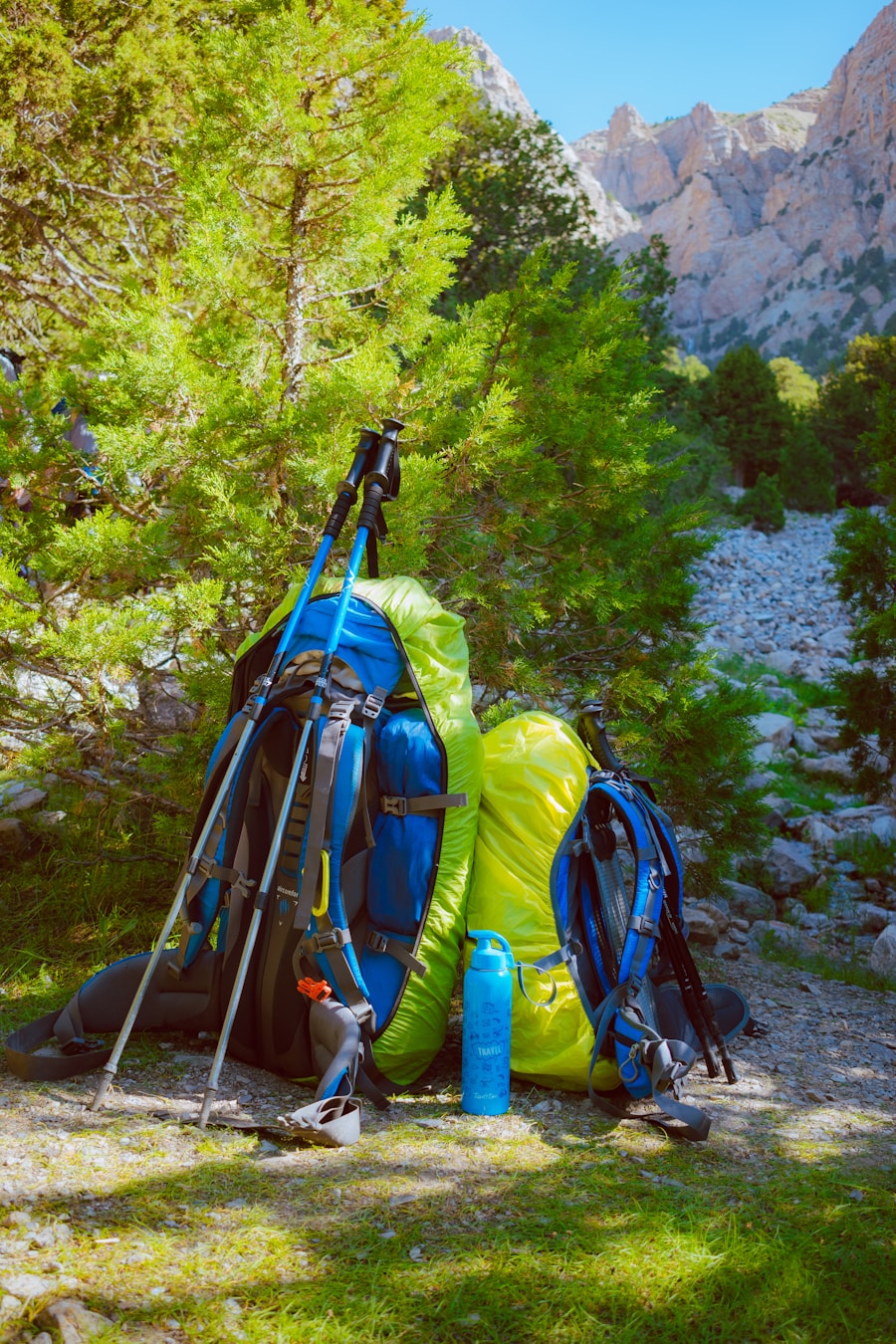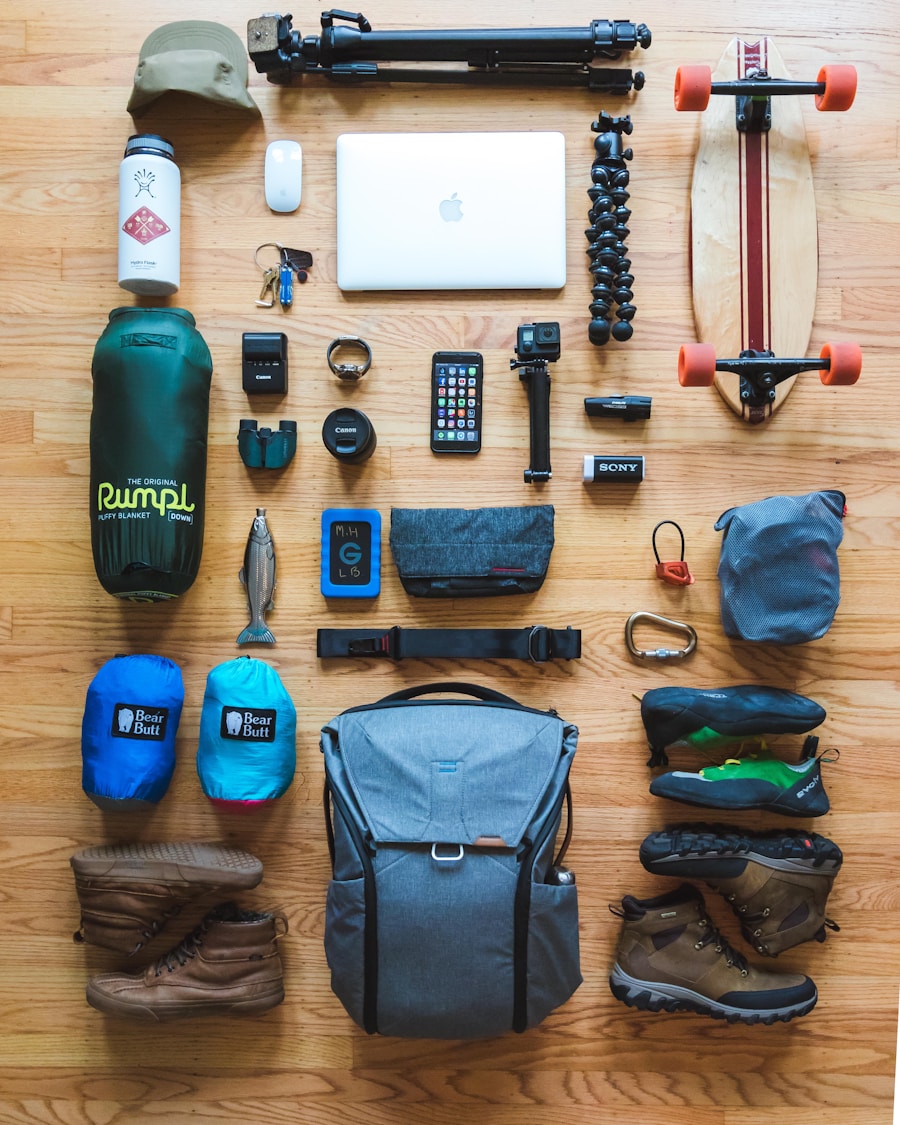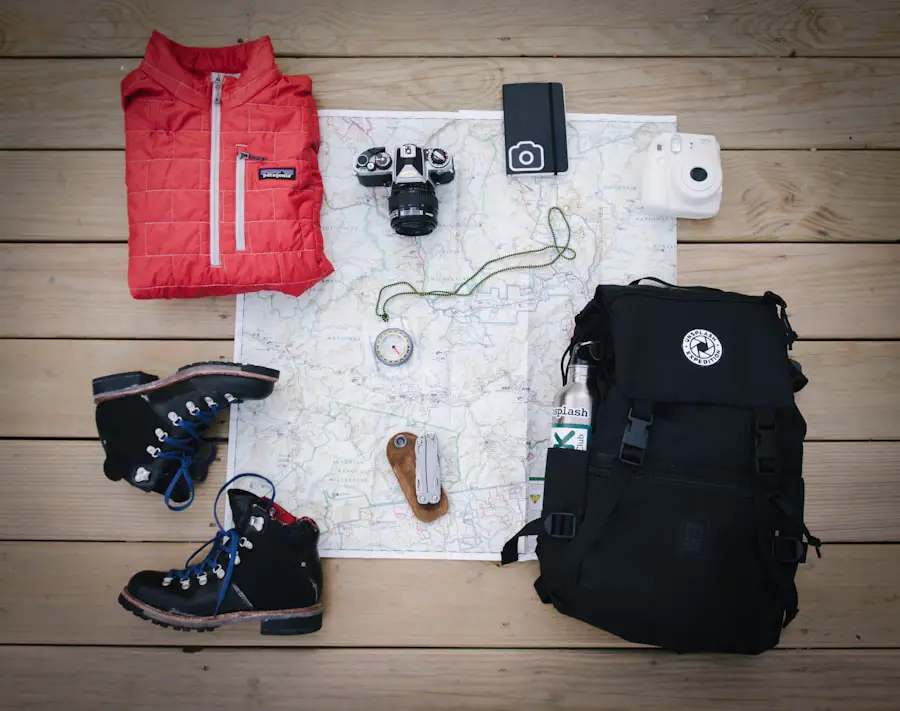When embarking on a hiking adventure, the significance of water cannot be overstated. Hydration is crucial for maintaining energy levels, regulating body temperature, and ensuring overall physical performance. The human body is composed of approximately 60% water, and during strenuous activities like hiking, this percentage can dwindle rapidly due to sweat loss.
Dehydration can lead to fatigue, dizziness, and even more severe health issues, making it imperative for hikers to carry an adequate supply of water. Depending on the length and intensity of the hike, the general recommendation is to drink about half a liter of water for every hour of moderate activity. To ensure that you have enough water for your journey, consider using hydration systems such as CamelBak bladders or water bottles that are easy to access while on the move.
Additionally, portable water filters or purification tablets can be invaluable for longer hikes where resupply points may be scarce. These tools allow hikers to refill their water supply from natural sources like streams or lakes, ensuring they remain hydrated without carrying excessive weight. It’s also wise to plan your route with known water sources in mind, allowing you to strategize your hydration needs effectively.
Key Takeaways
- Water is the most important gear for hiking, so always carry enough to stay hydrated.
- Pack snacks to fuel your adventure and keep your energy levels up while on the trail.
- First aid essentials are crucial for safety on the trail, so always carry a basic first aid kit.
- Map and compass are essential navigational tools for hikers to avoid getting lost on the trail.
- Sunscreen is crucial for protecting your skin from the sun’s harmful rays while hiking.
Snacks: Fueling Your Adventure
Snacks play a pivotal role in sustaining energy levels during a hike. The right snacks can provide quick bursts of energy and help maintain stamina over long distances. High-energy foods that are lightweight and easy to pack are ideal for hiking.
Trail mix, which typically combines nuts, seeds, dried fruits, and sometimes chocolate or granola, is a popular choice due to its high caloric density and nutritional value. Nuts are particularly beneficial as they are rich in healthy fats and protein, providing sustained energy without the crash that comes from sugary snacks. In addition to trail mix, energy bars are another excellent option for hikers.
Many brands offer bars specifically designed for outdoor activities, packed with carbohydrates, proteins, and essential vitamins. These bars are convenient and often come in various flavors to suit different palates. Fresh fruits like apples or bananas can also be great snacks; they are hydrating and provide natural sugars for quick energy.
However, it’s essential to consider the weight and perishability of your snacks when planning your hike. Balancing nutrition with practicality will ensure you have the fuel needed to tackle the trail ahead.
First Aid: Safety Essentials for the Trail

Safety should always be a top priority when hiking, and a well-stocked first aid kit is an essential component of any outdoor gear list. Accidents can happen at any time, whether it’s a minor scrape from a branch or a more serious injury like a sprained ankle. A comprehensive first aid kit should include adhesive bandages in various sizes, antiseptic wipes, gauze pads, adhesive tape, and pain relievers such as ibuprofen or acetaminophen.
Additionally, including items like tweezers for splinter removal and scissors for cutting tape or gauze can be incredibly useful. Beyond basic supplies, hikers should also consider including specialized items based on their specific needs or the environment they will be traversing. For instance, if hiking in areas where ticks are prevalent, including tick removal tools and insect repellent is advisable.
Furthermore, knowledge of basic first aid procedures can be just as important as having the right supplies. Familiarizing yourself with how to treat common injuries can make a significant difference in an emergency situation. Taking a first aid course tailored for outdoor activities can equip you with the skills necessary to handle various scenarios effectively.
Map and Compass: Navigational Tools for Hikers
| Navigation Tool | Features | Advantages |
|---|---|---|
| Map | Shows topography, trails, landmarks | Provides detailed visual information |
| Compass | Indicates direction, helps with orientation | Works without batteries or signal |
| GPS Device | Provides real-time location, tracks routes | Accurate and precise navigation |
In an age dominated by GPS technology and smartphone navigation apps, the traditional map and compass may seem outdated; however, these tools remain indispensable for hikers venturing into remote areas where electronic devices may fail due to lack of signal or battery life. A topographic map provides detailed information about the terrain, including elevation changes, trails, and natural landmarks that can aid in navigation. Understanding how to read a map is crucial; it allows hikers to identify their location relative to their planned route and make informed decisions about their journey.
The compass complements the map by providing directional guidance. Learning how to use a compass involves understanding how to take bearings and orient the map correctly. This skill becomes particularly valuable in dense forests or mountainous regions where visibility may be limited.
Practicing these navigational skills before heading out on a hike can build confidence and ensure that you are prepared for any situation that may arise on the trail. Combining traditional navigation methods with modern technology can create a robust safety net for hikers.
Sunscreen: Protecting Your Skin from the Sun
While enjoying the great outdoors, protecting your skin from harmful UV rays is essential. Prolonged exposure to sunlight can lead to sunburns, premature aging, and an increased risk of skin cancer. Therefore, applying sunscreen should be a non-negotiable part of your hiking preparation.
A broad-spectrum sunscreen with an SPF of at least 30 is recommended for effective protection against both UVA and UVB rays. It’s important to apply sunscreen generously on all exposed skin areas at least 15 minutes before heading out and to reapply every two hours or immediately after sweating or swimming. In addition to sunscreen, wearing protective clothing can further shield your skin from sun damage.
Lightweight long-sleeved shirts and pants made from breathable fabrics can provide coverage while keeping you cool during your hike. A wide-brimmed hat and UV-blocking sunglasses are also excellent accessories that not only protect your face and eyes but also enhance comfort during sunny hikes. Being proactive about sun protection will allow you to enjoy your outdoor adventures without the discomfort of sunburn or long-term skin damage.
Rain Jacket: Staying Dry in Unpredictable Weather

Weather conditions can change rapidly in many hiking environments, making a reliable rain jacket an essential piece of gear for any hiker. A good rain jacket should be lightweight, breathable, and waterproof to keep you dry without causing overheating during physical exertion. Look for jackets made from materials like Gore-Tex or similar waterproof fabrics that offer both protection from rain and breathability to allow moisture from sweat to escape.
When selecting a rain jacket, consider features such as adjustable hoods, cuffs, and hemlines that provide a snug fit against wind and rain. Ventilation zippers can also enhance comfort by allowing airflow when needed. It’s wise to test your rain jacket before hitting the trail; ensure it fits comfortably over your other layers without restricting movement.
Being prepared for inclement weather not only keeps you dry but also enhances your overall hiking experience by allowing you to focus on the beauty of nature rather than worrying about getting soaked.
Headlamp: Essential Gear for Night Hiking
For those who enjoy hiking during twilight hours or embarking on overnight adventures, a reliable headlamp is an indispensable tool. Unlike handheld flashlights, headlamps allow for hands-free illumination, making them ideal for navigating trails while carrying gear or setting up camp in low-light conditions. When choosing a headlamp, consider factors such as brightness (measured in lumens), battery life, weight, and comfort of fit.
A good headlamp should offer multiple brightness settings to adapt to different situations—whether you need a bright beam for navigating rocky terrain or a dimmer light for reading maps at camp. Additionally, look for models with adjustable straps that fit securely on your head or helmet without slipping during movement. Some headlamps even come with red light settings that preserve night vision while providing enough illumination to see without blinding fellow hikers.
Investing in quality lighting gear ensures safety and enhances the enjoyment of nighttime excursions.
Multi-Tool: A Versatile Tool for Various Situations
A multi-tool is one of the most versatile pieces of equipment a hiker can carry into the wilderness. These compact devices typically combine several tools into one unit—such as knives, screwdrivers, pliers, scissors, and bottle openers—making them invaluable for various tasks on the trail. Whether you need to make minor repairs on your gear, prepare food at camp, or address unexpected challenges like removing splinters or cutting rope, having a multi-tool at your disposal can save time and effort.
When selecting a multi-tool for hiking purposes, consider its weight and size; it should be compact enough to fit comfortably in your pack without adding unnecessary bulk. Additionally, look for models made from durable materials that can withstand rugged outdoor use. Some multi-tools even come equipped with specialized features tailored for outdoor activities—such as fish scalers or fire starters—adding further utility for specific adventures.
The convenience of having multiple tools in one compact device makes it an essential companion for any hiker looking to be prepared for whatever challenges may arise on their journey through nature.
When preparing for a hiking trip, it’s important to pack the essentials in your backpack. In addition to items like water, snacks, and a first aid kit, it can also be helpful to bring along a portable WiFi hotspot for international travel. This device can provide you with internet access while on the go, allowing you to stay connected and access important information during your hike. To learn more about portable WiFi hotspots and how they can enhance your travel experience, check out this article on portable WiFi hotspots for international travel.
FAQs
What should I put in a hiking backpack?
Some essential items to include in a hiking backpack are water, food, a map and compass, a first aid kit, a multi-tool or knife, a headlamp or flashlight, extra clothing layers, a waterproof jacket, sunscreen, and a whistle.
How much water should I carry in my hiking backpack?
It is recommended to carry at least 2 liters of water per person for a day hike. In hot or dry conditions, you may need to carry more.
What type of food is best for a hiking backpack?
Lightweight, high-energy snacks such as trail mix, energy bars, dried fruit, and jerky are good options for hiking. It’s also a good idea to pack a small meal or sandwich for longer hikes.
What should I consider when packing clothing in my hiking backpack?
When packing clothing for a hike, consider the weather conditions and pack layers that can be easily added or removed. It’s important to include a waterproof jacket and extra socks in case of rain or wet conditions.
Why is a map and compass important to include in a hiking backpack?
A map and compass are essential for navigation in case you get lost or lose your way on the trail. It’s important to know how to use them before heading out on a hike.
What should I include in a first aid kit for my hiking backpack?
A basic first aid kit for hiking should include items such as adhesive bandages, gauze pads, adhesive tape, antiseptic wipes, blister treatment, pain relievers, and any personal medications.
Is it important to pack a multi-tool or knife in my hiking backpack?
A multi-tool or knife can be useful for various tasks such as cutting bandages, repairing gear, or preparing food. It’s important to use it responsibly and safely.
Why is it important to pack a whistle in my hiking backpack?
A whistle can be used to signal for help in an emergency situation. It’s a lightweight and effective way to alert others to your location if needed.
